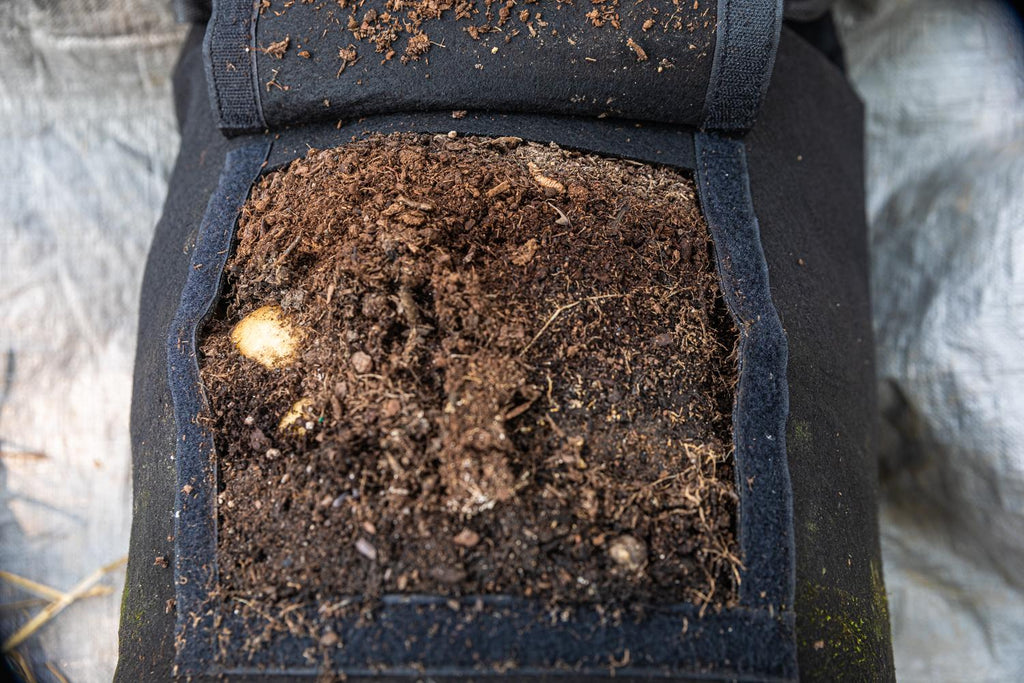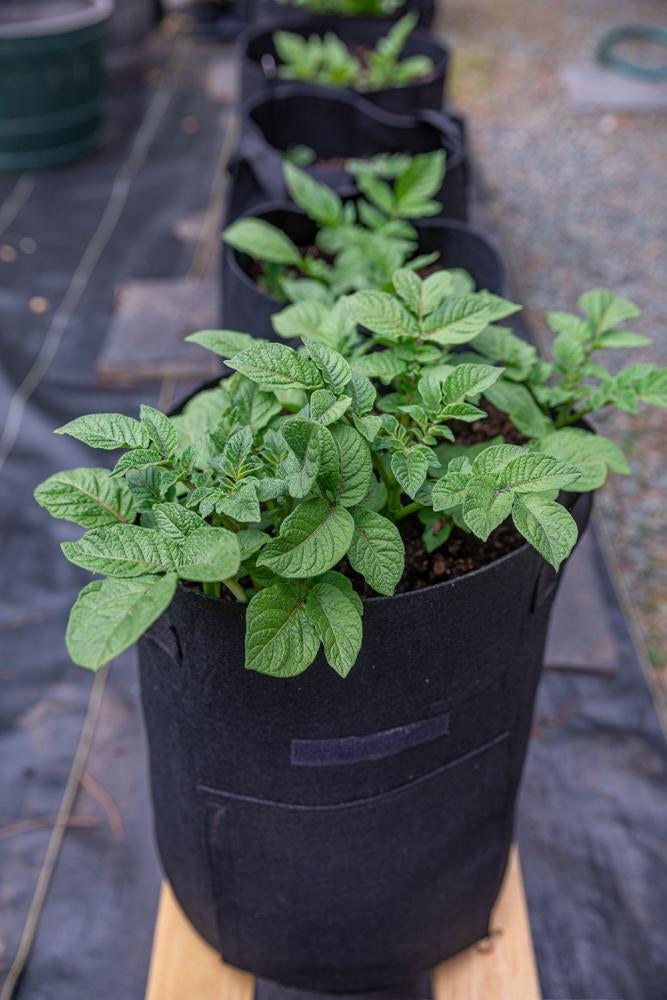
This is our favorite kind of blog to write—one in which we get to respond to your questions and hopefully help you on your gardening journeys! This spring, we’ve gotten a few questions via email about growing root vegetables in containers, especially potatoes, onions, and garlic. We thought that this could make an interesting thing to explore in a blog as an introduction to how to grow root veggies in your container garden. As it turns out, not only is this possible, but growing root veggies in containers can have some advantages under the right circumstances. So, in grand Gardzen fashion, let’s dig in!
Advantages to Container Gardening and Root Vegetables
We’ve written before about container gardening: the greater control of soil, light, and other conditions, the chance to more easily observe your plant’s growth and life-cycle, and the great use of small space. So if you’re a patio, windowsill, or indoor gardener, containers may be the best choice for your root veggies. This is especially true for root vegetables that have very specific needs vis-a-vis light and temperature, and may benefit from a little more shade.
The only caveat is this: be careful moving your root veggie containers around during the early stages of growth. If you move them carelessly, the bounding-around can create a mini-earthquake that damages nascent roots and stems! Move your containers carefully and deliberately to minimize these disruptions and things should be fine for most plants.
Which Soil and Containers Should I Use?
Let’s start with the soil. Most common root veggies—potatoes, onions, garlic, carrots—prefer a relatively rich, fairly loose and light soil. The reason is pretty obvious: root veggies need food to grow, and a lighter soil helps them develop without having to fight there way through dense growth media. So for growing root vegetables in containers, a good container mix with some compost added should do fine.
Containers get a little more complicated. While you can use most containers, ones that are well-drained are best for most veggies, and in particular root vegetables. Excess water can lead to root-rot, which is a particular problem for plants that store so much below ground anyway! While we try to avoid directly recommending our own products on this blog—we want this to be about good gardening information for everyone—our fabric growing containers really are ideal for growing root veggies. While smaller containers are fine for garlic and some varieties of carrots, we do recommend getting five or ten gallon containers for onions, larger carrot varietals, and potatoes. Fabric containers help the soil regulate its own moisture, provide great drainage, and help the roots breath and aerate as the plant grows. Our potato bags even feature a window that makes harvesting new potatoes easier as the plant grows, and can let you observe the potatoes growing—which is especially good for new gardeners or little ones who are learning.

Planting Root Vegetables in Containers
More good news for gardeners trying this experiment: planting root vegetables in containers is generally pretty easy, although there are some particular approaches for some plants. For carrots, just start the seeds directly in the container filled with potting soil and care for them as you would in the ground or raised beds. While you can start onions and garlic from seeds, it’s more common to use starts—young onions or garlic cloves. You can use garlic cloves from the grocery store, especially if they’ve already started to put out a green spout. Just plant the start up to the green part or bury the clove a half inch or so below the surface and cover.
Planting potatoes is a little different, as the ways in which potatoes grow gives us some unique opportunities. As the potato plant grows upward, it puts out new potatoes along the entire length of the stem that’s underground. So, by starting potatoes in a relatively thin layer of soil and adding more as the plant grows, we can encourage it to put out more potatoes by forcing the stem to grow higher. It’s easy to do! Just plant your seed potatoes—yes, you can use potatoes from the store that have started to put out eyes; just cut them into chunks rather than planting a whole potato, with an eye on each—and cover them with dirt or compost to the depth of about an inch. The plant will start to sprout, and as the green leafy stem grows upward you can add more dirt. There are a variety of approaches here, but the one that works best for us is to just keep covering the sprouts as you seem them break through the soil. Add a few more inches till it starts to emerge again, then add a few more! When the plant reaches the top of the container, that’s time to stop and let it grow fully up, flower, and die back. That’s the time to harvest the remaining potatoes—although you can pull some as you go.

If you see potatoes tubers sticking through the surface of the soil, cover them up with another layer an inch or two deep. Exposing growing potato tubers to sunlight can cause greening or scalding, making them inedible.
Watering Root Veggies in Containers
We got a very nice email asking questions about this—we won’t name names, but you know who you are and we’re grateful for you!—so we thought we’d address it in a bit more depth. The popular gardening wisdom is that you shouldn’t water potatoes till they start to sprout. This is fairly accurate for potatoes. Generally we plant seed potatoes in soil that’s already moist and avoid adding more water until the potato sprouts start to emerge. After that we keep the soil moist but not soaked, making sure that the soil stays moist all the way through, not just on the surface.

But what about other root veggies? Well as it turns out they have their own water needs. Most things started from seed need to be kept moist while the seeds are sprouting, and this includes root veggies like carrots, onions, and garlic. Onion and garlic starts should be treated like any seedling, and given enough water to keep them moist and happy but not waterlogged.
What about garlic cloves, however? Do we treat them like potatoes and avoid watering till they sprout, or should we water them like seeds? Based on our own experiences and the professional garlic farmers we talked to, garlic cloves should be kept moist but not over-watered as mold and rot can set in. After planting and covering your cloves, water them well and add mulch. Combined with a container that allows for good drainage and the right potting soil, this is the best path towards success in most gardening conditions.
Container Gardening is for Everyone!
Container gardening is special because it helps make gardening more accessible. Most of us have space for a container or two somewhere, and a great many garden plants can be grown in them. We hope this blog makes growing root vegetables in containers more appealing and that you give it a try no matter what kind of garden space you have.
As always please send us your questions, stories, and photographs of your garden. We love hearing from you!

Leave a comment